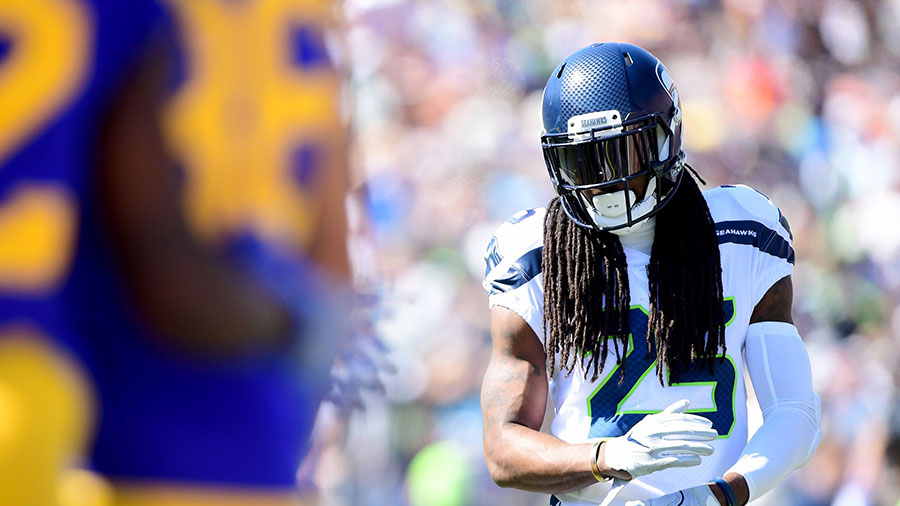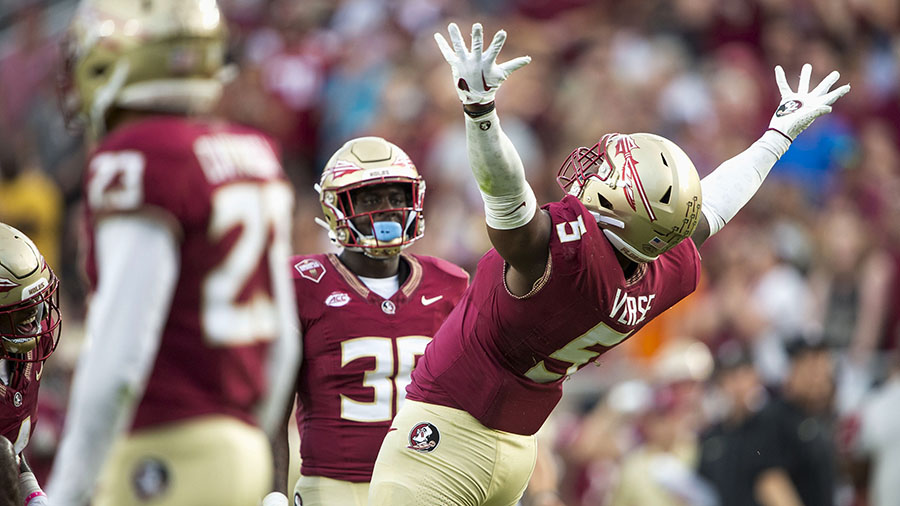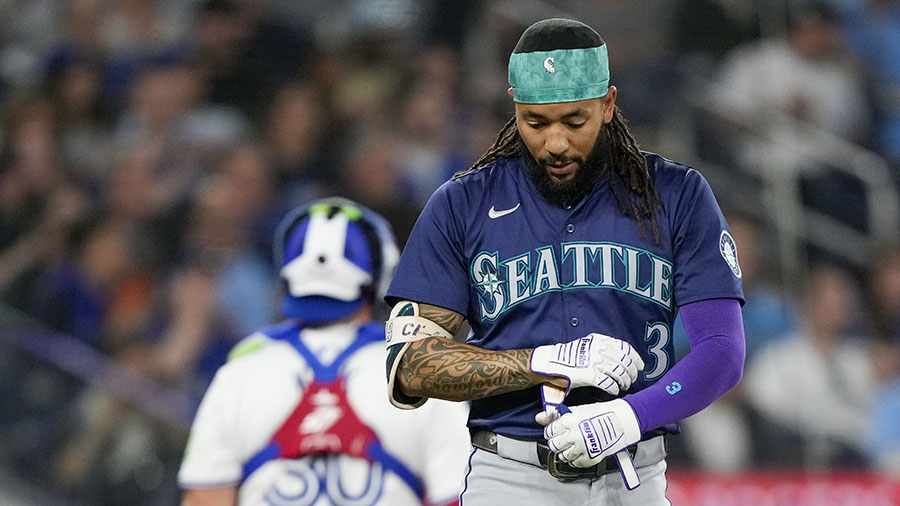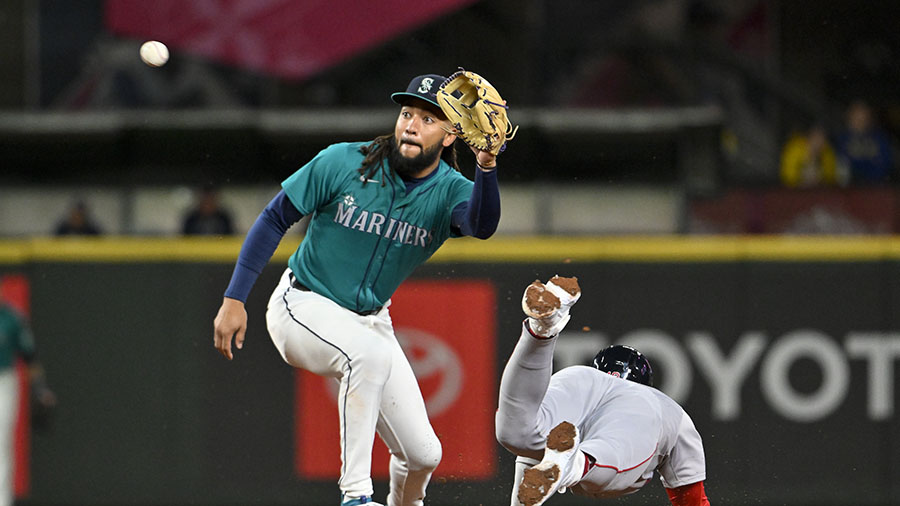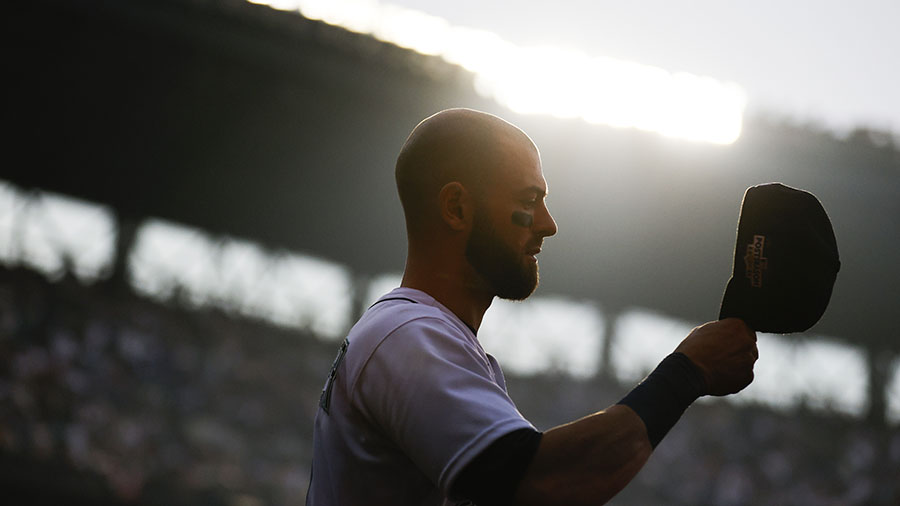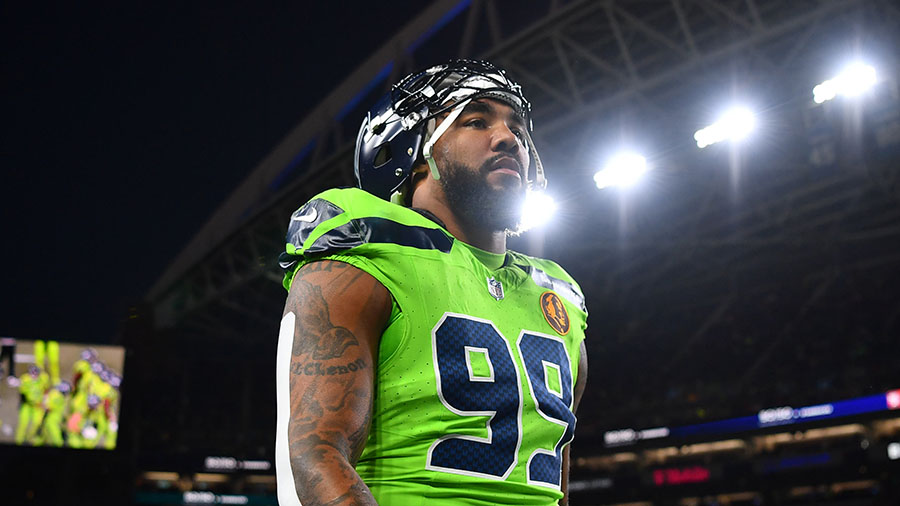Salk: The NFL’s big QB problem that Seahawks must learn from
Mar 20, 2024, 1:02 AM | Updated: 10:08 am
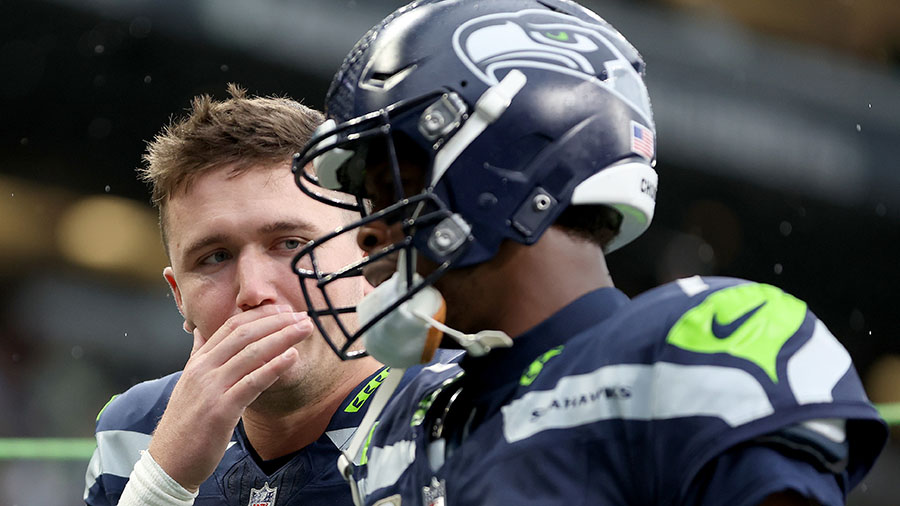
Seattle Seahawks quarterbacks Drew Lock and Geno Smith on Nov. 12, 2023. (Steph Chambers/Getty Images)
(Steph Chambers/Getty Images)
Winning in the NFL is hard. Sustaining success is even harder. After all, the league has done everything in its power to maintain parity among its 32 franchises.
Huard: ‘Clues’ show Seattle Seahawks are building more for 2025
Strategies designed to climb to the top and then stay there vary, and there are plenty of ways to get there. But one stands out as being close to foolproof: find an elite franchise quarterback, build around him and then don’t let him go!
Easy, right?
The problem, of course, is that those players are exceedingly rare. They are difficult to identify, hard to acquire, and sometimes challenging to develop. There is no blueprint and no guarantee that even the most highly regarded prospects will blossom.
Further complicating the situation, the more you invest in trying to find that player, the more committed you tend to be to insuring that player’s success. If you are wrong, you can waste years trying to draw blood from a stone.
Oh, and it seems like the number of truly elite quarterbacks is dwindling. Right now, Patrick Mahomes might be the only one in the league. With all of these risks and challenges, it’s no wonder that NFL teams are trying whatever they can to get the position right. And if they can’t find the next Mahomes, they at least want to have capable play at the position.
It’s not working very well.
So poorly, in fact, that Dante Koplowitz-Fleming (who does editorial research for NFL Media) noted that of the 19 quarterbacks selected in the 2021 and 2022 NFL Drafts, only two are expected to start in Week 1 in 2024: Jacksonville’s Trevor Lawrence, the first pick in 2021, and San Francisco’s Brock Purdy, the last pick in 2022.
The 17 selected between them have all either failed to start games or haven’t taken advantage of their opportunities to do so. That is a hit rate of just 11%. And I don’t mean a hit rate of finding an elite quarterback (I would argue that so far none of those 19 players are in that category) or even a solid starter. Only 11% are likely to start at all. That is a horrible percentage for the league.
But does it mean 89% of the quarterbacks drafted weren’t good enough? I’m not convinced that is the case, and neither are lots of others.
NFL Media analyst Bucky Brooks saw this stat and declared: “The NFL has a QB evaluation and development problem. There’s no other way to spin it… The league doesn’t know what leads to success at the position. And coaches do not know how to play around a QB’s flaws. Until those issues are fixed, we will continue to see a revolving door at the position… At some point, we can’t keep blaming the players. This is what high schools and colleges are producing. It’s time for the league to adapt and adjust.”
He is right. Here are three reasons why and a few suggestions for what teams can do to change this.
1. NFL teams prioritize the wrong traits.
How many times do we hear about big, rocket arms and tight spirals? Sure, it’s nice to be able to throw the deep ball out from the far hash, but how many times per game does that come up?
There is no doubt that arm strength helps quarterbacks fit the ball into the increasingly small windows open to them in the NFL. The tight spirals cut through the windy conditions in December. I’d sure want size and strength if I was being chased by the defensive ends in this league.
But there is so much more to the position. Teams need to value leadership more. They need to value a quarterback’s ability to relate to all of his teammates and bring them together. They need to value accuracy, the ability to read a defense, the ability to process quickly and make the best decisions.
They need to learn from the Kyle Bollers, Zach Wilsons, Trey Lances, Josh Rosens and Blaine Gabberts. Look for quarterbacks who elevated their programs, brought people together and hit the open men. I think this is what Bucky Brooks means when he says they don’t know what leads to success at the position.
2. Teams try to fit QBs into their system rather than building around their strengths and weaknesses.
Anyone who has ever taken over a new management position knows that the first thing to do is get to know your team so that you can put everyone in the best position to succeed. You sit and learn before you devise the right strategy.
I understand that NFL coordinators have spent years developing their systems and they need to make sure that system can be run efficiently by whichever quarterback takes the snaps. After all, most teams need to start multiple options each year if for no other reason than because of injury.
But I am constantly shocked at how many quarterbacks are asked to do things that they aren’t great at doing.
This is where I tell you (to your hysterical laughter) that Tim Tebow could have been a perfectly successful NFL quarterback if teams had just built around his strengths. When Denver let him run and play a game akin to what he had done at Florida, they won. They made the playoffs. They beat the Steelers to advance. Everyone thought he was lucky (and maybe he was), but when they didn’t ask him to do things he wasn’t good at, he used his skills to beat opponents.
Pete Carroll did very much the same thing with Russell Wilson in their early years together with the Seattle Seahawks. Neither Pete nor Darrell Bevell, the Hawks’ offensive coordinator at the time, had ever run the read option, but they recognized Russ’s skillset and adapted round it. It worked, until Wilson pushed for a more mature passing game that he wasn’t particularly equipped to run.
NFL teams would do well to learn from that.
3. NFL teams don’t seem to really develop anyone at the position.
This one seems hard to imagine, but it makes some sense given the regulations and pressures placed on coaches and teams.
Roster spots are at a premium so most teams carry only two quarterbacks instead of three. Various changes to the collective bargaining agreement have drastically cut the amount of time for practice. And coaches are under such pressure to win that they need to reserve as many snaps as possible for their starting quarterbacks.
Oh, and those starters are almost always learning a somewhat new system since the offensive coordinators change over so often. In fact, every single NFL team has changed their offensive coordinator in the last three years. Every single one. Some were fired, others were promoted elsewhere. But change is nearly constant.
NFL Network host Rich Eisen joined us Tuesday on Seattle Sports’ Brock and Salk and told a story in which he asked former Titans coach Mike Vrabel how young Will Levis was coming along.
“He shrugged,” Eisen recalled. “He’s like, ‘Your guess is as good as mine because we don’t get the practice reps for him. He doesn’t get the reps and we don’t have the time for the reps.’”
Yikes! But with that environment, how much time could you possibly spend on the field with your young backup? And that is if you even allow your young quarterback to spend any time as a backup to begin with.
Some quarterbacks come into the league fully formed and ready for instant success like C.J. Stroud. But that is the exception, not the rule. Many more success stories follow either the “sit and learn” approach that produced Aaron Rodgers, Tom Brady and Patrick Mahomes, or the “given time to fail” approach that worked for Peyton Manning and Matt Stafford.
Eisen also mentioned that late bloomer Jared Goff told him teams should give young quarterbacks four years to determine if they can play. Sounds great, but who has that kind of time?
The answer has to be somewhere in the middle. These teams invest so much into the position and they are so desperate to have it work out, but they aren’t putting the resources into insuring that it does.
There are plenty of other issues. The pressure on young leaders is higher than ever with big money and fan bases that are closer (and more entitled) than ever because of social media. They aren’t developed as well or for as long in college. And for whatever reason, they fear the scarlet ‘A’ of being labeled a “game manager.”
The Seattle Seahawks have a new coach, a new coordinator and some time to find their long-term starter at quarterback. Geno Smith offers them time – enough of a cover that they can spend time searching for the right youngster and develop him as well as possible.
Maybe that will be Sam Howell, who they traded for last week. Maybe it will be someone else. But I hope they give those players the best chance at success by searching for the right qualities, building around their unique strengths, and actually using the time they have to let that player improve.
Otherwise, they are doomed to the same fate as the 89% who won’t be starting this September.
Seattle Seahawks coverage
• Eisen: QB Sam Howell takes pressure off Seattle Seahawks in NFL Draft
• Mock Draft Roundup: UW’s Fautanu remains popular pick for Seahawks
• Seahawks add big defensive tackle in free agency
• Seahawks makes second addition at safety this offseason
• Huard: The Seattle Seahawks’ two best value signings in free agency



